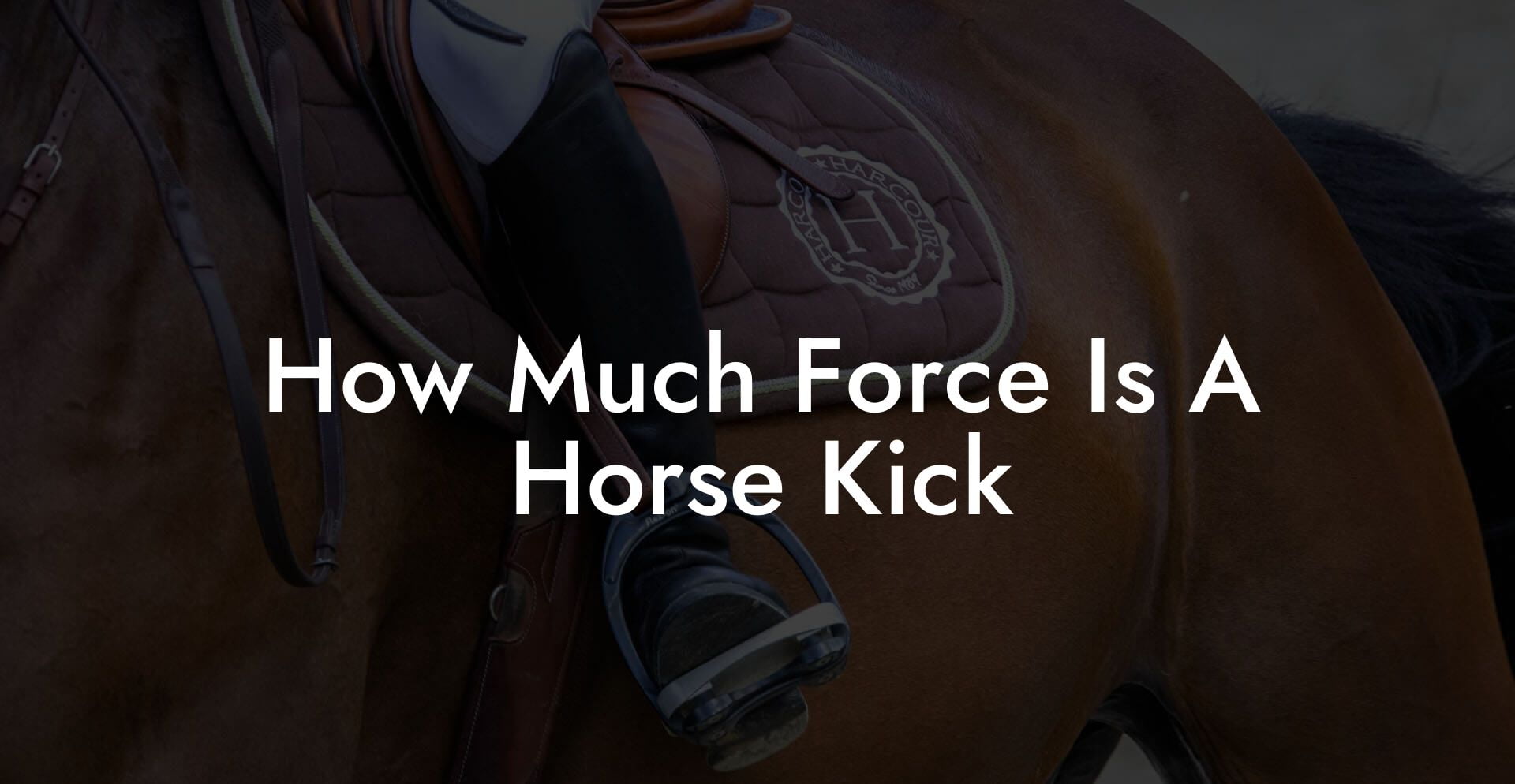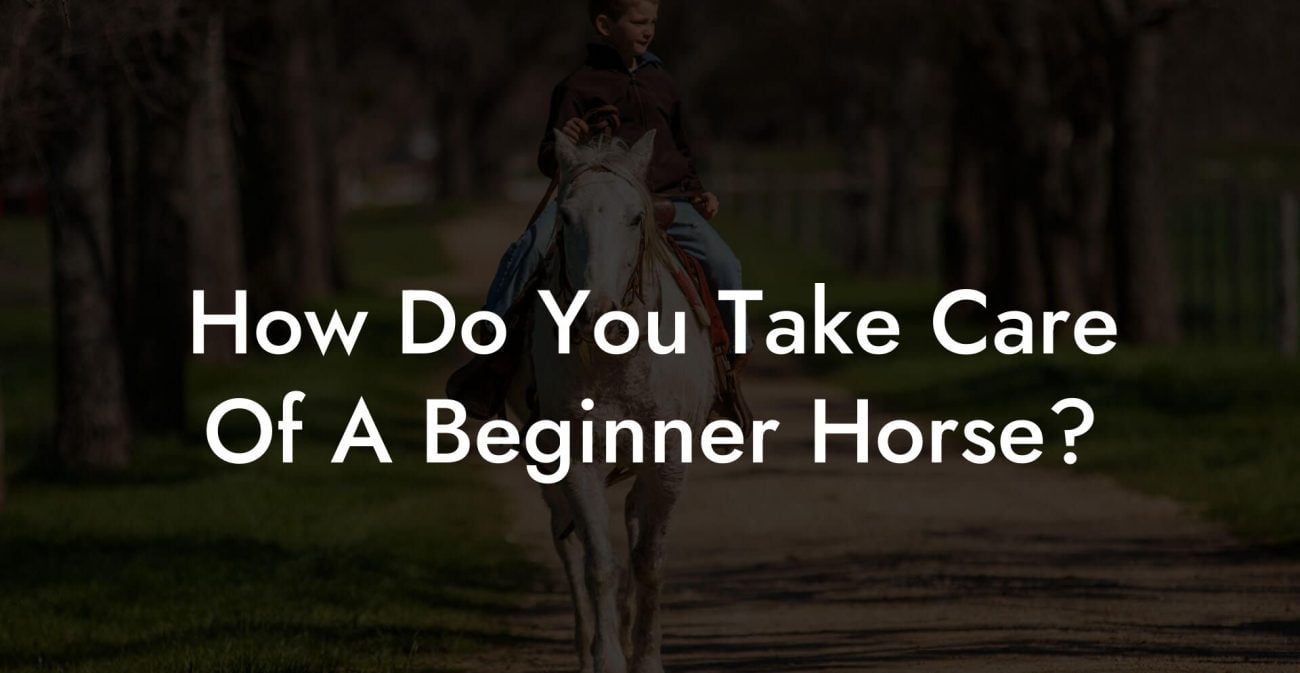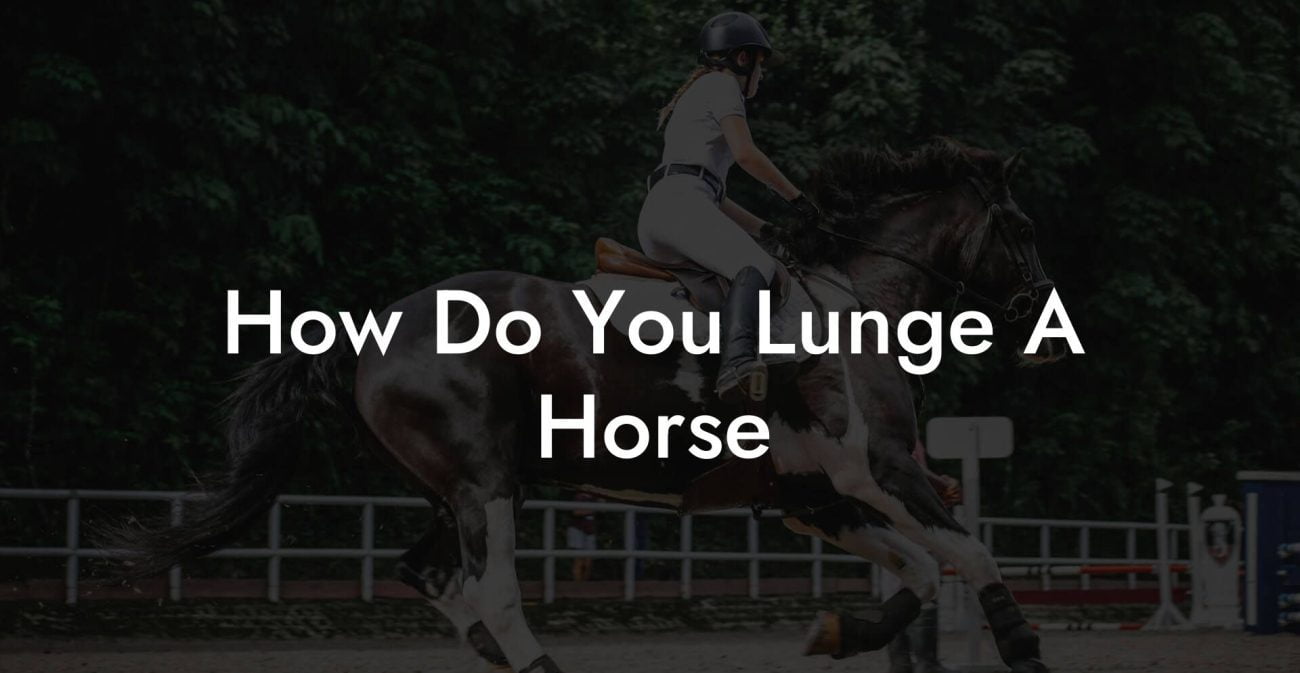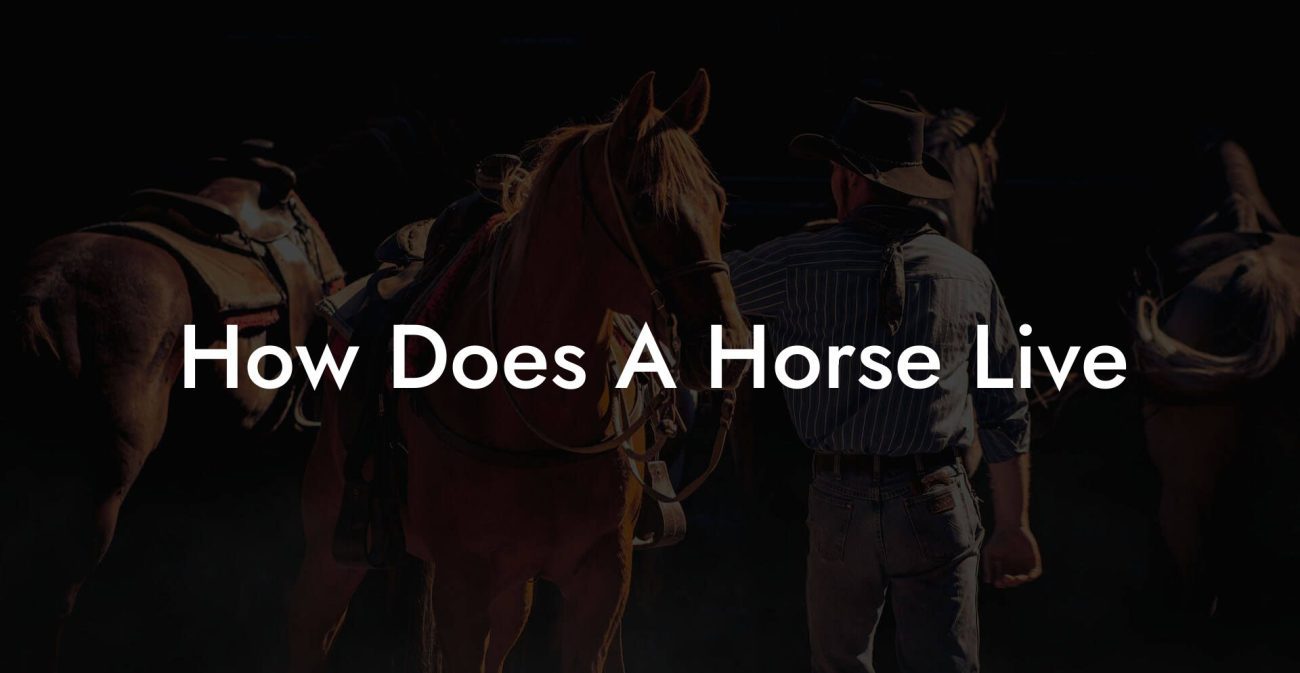Ever wondered if your favorite equine buddy’s well-timed kick could send shockwaves like a Marvel supervillain’s punch? Hold on to your riding helmet because we’re about to dive into the world of horse kick physics, a mashup of raw power, nature’s dynamics, and a dash of humor to keep things as engaging as a TikTok viral video. Whether you're deep into equine care, a Gen-Z rider just discovering the thrills of horse matters, or a millennial equestrian vetting safety tips, this deep-dive is your ultimate guide to understanding just how much force a horse can unleash with a single kick.
Quick Links to Useful Sections
- Understanding Horse Kick Force: The Basics
- Horse Anatomy and the Mechanics of a Kick
- Decoding the Physics: Speed, Mass, and Impact Energy
- Comparative Analysis: Horse Kicks vs. Human Kicks
- The Impact of a Horse Kick: Safety and First Aid Insights
- Veterinary and Behavioral Perspectives on Horse Kicking
- Equestrian Safety: Practical Tips to Prevent and Mitigate Kicks
- Real-Life Case Studies: When Horse Kicks Have Made Headlines
- Case Study 1: The Unexpected Arena Kick
- Case Study 2: A Lesson in Veterinary Intervention
- Case Study 3: Balancing Training and Safety
- Caring for Your Horse: Creating a Safe, Supportive Environment
- Resources and Community Support: Your Next Steps
- Frequently Asked Questions About Horse Kick Force
- Your Journey to Safer, Empowered Horse Handling
Understanding Horse Kick Force: The Basics
When horses kick, they’re not just being rebellious or playful, they’re channeling literal horsepower! A horse kick is an impressive example of sheer kinetic energy in action. But how do we measure this force, and what does it really mean when you get whiff of that thunderous impact? To break it down, we need to explore the physics behind it: the power behind muscle mechanics, the speed and mass of a galloping equine, and the body mechanics that turn a simple kick into a forceful strike.
At its core, force is measured in newtons (N), a unit that essentially quantifies the push or pull applied by an object. A horse – typically weighing anywhere between 900 to 2,200 pounds – can generate staggering forces when it kicks, thanks to those powerful hind leg muscles. When you combine muscle strength, biomechanics, and that lightning speed of execution, you’re looking at a force that can exceed 1,000 newtons in a single, well-timed kick. And that’s not just theoretical; it’s backed up by many equine physics studies and impressive field tests.
The secret sauce here is not only about brute strength but also about timing, momentum, and the angle at which the kick is delivered. This all comes together to form a force capable of knocking the wind out of even the most seasoned rider.
Horse Anatomy and the Mechanics of a Kick
Let’s break down the anatomy behind that legendary horse kick. Modern biomechanics has revealed that the primary drivers of kick force are the large, powerful muscles in the hindquarters, particularly the gluteals and hamstrings. These muscles, combined with the leverage offered by the long limbs, create a natural catapult effect. Think of it as nature’s very own trebuchet!
When a horse decides it's time to express its displeasure (or, you know, just to show off), the following sequence unfolds:
- Muscle Contraction: The process begins with rapid, forceful muscle contractions that store and release energy in a swift, explosive motion.
- Leg Extension: The hind leg extends with precision and speed, leveraging every ounce of kinetic energy available.
- Impact Dynamics: Upon contact, the force is transferred through the skeletal structure of the kick, which, combined with the impact area (often the target's limb or body), can lead to shock waves measured in hundreds of newtons.
This mechanism isn’t just about sheer power, it’s also extremely efficient. This efficiency is what makes a horse kick such a formidable force in the animal kingdom, and why understanding it is critical for anyone involved in proper horse care and safety.
Decoding the Physics: Speed, Mass, and Impact Energy
To appreciate just how potent a horse’s kick can be, we have to flirt with three key physics principles: mass, acceleration, and impact energy. Here’s the lowdown:
- Mass: A fully grown horse can weigh up to 1,000 kilograms or more. That hefty mass means even a modest acceleration can result in a tremendous amount of force.
- Acceleration: When a horse kicks, its leg moves at an impressive speed, think fast enough to rival a speeding car in a 0-60 sprint.
- Impact Energy: Energy is calculated using the formula KE = 1/2 mv², meaning that when you factor in a horse’s mass and the velocity of its kick, the resulting impact energy can be massive.
In equestrian terms, this is why a horse’s well-aimed rear kick could produce the kind of impact that might rival, say, a car crash at low speeds. It also explains why, in many horse training sessions and care routines, safety protocols are taken very seriously.
It’s not just academic: the interplay of these elements has practical implications in everything from veterinary care to designing safe equestrian facilities. By understanding these dynamics, caretakers can better anticipate risky situations and strategize to minimize potential injuries.
Comparative Analysis: Horse Kicks vs. Human Kicks
Picture a typical human martial arts roundhouse kick. Impressive in its own right, it might generate a force that's adequate to stun an opponent, but when compared to a horse kick, the difference is astronomical. A human kick usually sits in the range of a few hundred newtons, whereas a horse kick can easily overshoot that mark. This numerical gap underscores not just a difference in physical power but the very evolution of anatomy and function in these two very different species.
For context, if you’ve ever watched a slow-motion video of a basketball dunk, you know that physics isn’t just a dry subject, it’s the secret ingredient behind every awe-inspiring moment. Similarly, when a horse extends its leg with both grace and brute force, it’s the interplay of muscle dynamics and natural engineering at work. In the grand theater of nature, a horse kick could be likened to an unmatched VIP performance, leaving even the most acrobatic human moves in the dust.
This comparison is also a gentle reminder to anyone handling or caring for horses: respect the animal’s power. Being mindful of the differences in anatomy and force can help prevent accidents, ensuring that safety remains a top priority.
The Impact of a Horse Kick: Safety and First Aid Insights
When it comes to equestrian safety, understanding the sheer force behind a horse kick is crucial. Getting caught in the crossfire of a high-powered kick isn’t a joke, it can lead to significant injuries ranging from bruises and fractures to more serious trauma. The high-impact energy can even cause concussions or internal injuries, especially if the kick hits vulnerable parts of the body.
Equine enthusiasts and casual riders alike must be aware of practical first aid and preventative measures. Here are some essential tips to keep in mind:
- Wear Protective Gear: Helmets, padded vests, and appropriate riding boots can mitigate the effects of an unexpected kick.
- Maintain a Safe Distance: Always watch the horse’s body language. Signs like pinned ears, swishing tails, or restive movements can be precursors to a kick.
- Know Your First Aid: Familiarize yourself with the basics of treating contusions, fractures, and internal injuries. Keeping a well-stocked first aid kit at your stable is a must.
- Invest in Training: Both riders and trainers benefit from courses in handling equine behavior and emergency preparedness. A calm, well-trained horse is far less likely to resort to a kick out of fear or discomfort.
Remember, safety isn’t just about reacting to a situation, it’s about proactive risk management and nurturing a trusting relationship with your horse. Understanding the physics behind a horse’s kick gives you the confidence to create a safer environment for everyone involved.
Veterinary and Behavioral Perspectives on Horse Kicking
So, why do horses kick in the first place? From a behavioral standpoint, kicking is often a defensive action. It’s an instinctual response when a horse feels threatened or cornered. Stress, poor handling, or even environmental triggers can set off this explosive reaction.
Veterinarians and equine behaviorists emphasize that understanding the context behind a kick is vital for proper care. Here are some insights:
- Communication Signals: Horses communicate largely through body language. A sudden flinch or a shift in weight might signal that a kick is imminent.
- health Check: Sometimes, a kick can be a reaction to pain. Regular veterinary check-ups will not only keep your horse in top shape but will also help identify any underlying conditions that might provoke aggressive behavior.
- Behavior Modification: Techniques such as desensitization and positive reinforcement training can often reduce the likelihood of a defensive kick. By ensuring that your horse is confident and well-adjusted, you help mitigate the risk of sudden, forceful reactions.
- Stress and Environment: Overcrowded stables, abrupt changes in routine, or stressful situations can all contribute to aggressive behavior. A calm, supportive environment is key for a happy, healthy horse.
Veterinary professionals always stress that integrating a keen understanding of equine behavior with regular health check-ups is the cornerstone of preventing dangerous incidents. As you care for your horse, keep these principles in mind, it’s as much about emotional well-being as it is about physical health.
Equestrian Safety: Practical Tips to Prevent and Mitigate Kicks
If you’re investing in the care of a horse, embracing a proactive approach to safety is non-negotiable. Beyond the specifics of understanding force dynamics and animal behavior, practical, everyday safety tips are key to preventing those high-impact horse kicks.
Here are some practical recommendations for equestrian safety:
- Design Your Space Wisely: Whether it’s your stable, paddock, or training arena, ensure that the layout minimizes risk. Fenced boundaries, strategic lighting, and ample maneuvering space all contribute to a safer environment.
- Regular Training Sessions: Beyond basic riding skills, participate in training sessions that focus on handling unpredictable equine behavior. These sessions help both you and your horse build mutual trust and understanding.
- Personal Protective equipment (PPE): Invest in industry-standard PPE. Helmets, protective vests, and even padded trousers can significantly reduce the risk and severity of injuries in the event of a kick.
- Emergency Protocols: Develop and rehearse emergency response protocols. Whether it’s a first aid kit ready at hand or the number for emergency veterinary services, quick action can make all the difference.
- Constant Vigilance: Always stay attuned to your horse’s body language. Even subtle cues can preempt a kick, allowing you to step back or redirect the situation before escalation.
Remember, every moment spent on safety training and environmental optimization is an investment in both your well-being and that of your magnificent horse.
Real-Life Case Studies: When Horse Kicks Have Made Headlines
Sometimes, the most compelling lessons come from real-life stories that highlight both the power of a horse kick and the critical need for proper safety measures. Here are a few case studies that shed light on the dramatic impact of a high-force kick:
Case Study 1: The Unexpected Arena Kick
In a bustling county fair renowned for showcasing incredible equestrian talents, one event took an unexpected turn when a veteran show horse, known for its impeccable performance, suddenly delivered a forceful rear kick during a demonstration. The kick, measured at nearly 1,200 newtons by on-site sensors (yes, farms are getting high-tech!), resulted in minor injuries to an arena handler. This incident spurred the organizers to implement enhanced safety measures, including more robust PPE guidelines and advanced behavioral monitoring, ensuring that subsequent events prioritized both entertainment and participant safety.
Case Study 2: A Lesson in Veterinary Intervention
During routine check-ups, one equine veterinarian noted that a seemingly normal horse began exhibiting signs of discomfort and restlessness. After further evaluation, it was revealed that the horse had sustained a subtle injury from a previous kick incident. Through a combination of targeted physiotherapy, behavioral retraining, and nutritional support, the horse not only recovered but also became a leading example in a community seminar on preventing aggressive behavior. This case underlined the importance of early diagnosis and intervention in averting more serious complications.
Case Study 3: Balancing Training and Safety
At a well-known equestrian center, an ambitious student rider experienced a close call during a practice session when a startled horse delivered a kick. Thanks to comprehensive safety training and immediate first aid, the rider recovered quickly with only a minor bruise. The incident led to a center-wide review of training practices, introducing advanced de-escalation techniques and stricter protocols for stress management among horses. Such stories serve as both cautionary tales and inspiring examples of how informed, proactive measures can turn a potentially dangerous moment into a learning opportunity.
Each of these case studies demonstrates not only the raw power behind a horse kick but also the transformative impact of robust safety practices, vigilant care, and responsive veterinary intervention. The moral? Knowledge is power, and staying informed is your best defense.
Caring for Your Horse: Creating a Safe, Supportive Environment
Being a responsible horse caretaker means taking every possible measure to ensure that your majestic companion feels secure, calm, and well-cared-for. After all, a happy horse is far less likely to resort to kicking as a defensive or reactive behavior. Here are some essential strategies for creating an environment that minimizes the risk of aggressive behavior:
- Regular Health Check-Ups: Routine visits from a veterinarian ensure that any underlying medical issues are promptly identified and addressed.
- Behavioral Assessments: Employ the expertise of an equine behaviorist who can evaluate your horse’s temperament and recommend targeted interventions if necessary.
- Environmental Enrichment: A well-stimulated horse with plenty of space to roam, interactive toys, and ample social contact is far less likely to exhibit stress-induced behaviors.
- Smart Handling Techniques: Use positive reinforcement and exposure therapy to desensitize your horse to situations that might trigger fear or anxiety.
- Consistent Routine: Horses thrive on consistency. A predictable routine for feeding, exercise, and rest not only reduces stress but also reinforces a sense of trust and security.
By creating a nurturing environment, you’re not only safeguarding yourself but also contributing to the overall well-being and longevity of your horse. A comfortable, secure horse is a happy horse, and happy horses make for a safer and more fulfilling riding experience.
Resources and Community Support: Your Next Steps
Navigating the world of horse care and safety can feel overwhelming, but you’re never alone. The equestrian community is vast and vibrant, filled with experts, experienced riders, and fellow enthusiasts who are eager to share their insights and support. Here are some resources and next steps to help you deepen your understanding and bolster your equestrian safety practices:
- Online Forums and Social Media Groups: Platforms like Reddit, Facebook groups, and specialized horse care forums are excellent places to exchange tips and stories with other horse lovers.
- Workshops and Training Sessions: Look for local or virtual workshops that focus on equestrian safety, emergency first aid, and behavioral management techniques.
- Equine Associations: National and international equestrian organizations often offer guidelines, certification programs, and a wealth of educational materials to keep you on the cutting edge of horse care.
- Veterinary Consultations: Establish a close relationship with your local equine veterinarian who can act as a resource for both medical emergencies and routine wellness check-ups.
- Mobile Apps and Online Courses: Leverage technology to track your horse’s health, schedule regular training sessions, and even simulate emergency scenarios to be better prepared.
By tapping into these resources, you’re setting the stage for a proactive, informed approach to equine care. Empower yourself with knowledge, share your experiences, and join a community that values safety, respect, and the awe-inspiring power of a horse kick.
Frequently Asked Questions About Horse Kick Force
Have questions about the dynamics and impact of a horse kick? Check out these FAQs for quick insights and practical answers.
1. How much force does a horse kick typically generate?
A single kick from a horse can generate anywhere between 800 to over 1,200 newtons, depending on factors like the horse's size, muscle strength, and kicking speed.
2. What factors influence the force of a horse's kick?
Key factors include the horse’s mass, the speed of the kick, muscle power, and the biomechanics of the leg movement. Training and behavioral factors also play a role.
3. How do horse kicks compare to human kicks in terms of force?
Human kicks typically generate much lower force, usually a few hundred newtons, making a horse’s kick several times more powerful.
4. Can a horse kick cause serious injuries?
Yes, due to the substantial force behind a horse kick, injuries can range from bruises and fractures to more severe internal trauma. That’s why proper safety gear and handling techniques are critical.
5. What should I do if I’m accidentally kicked by a horse?
Immediately assess the injury, apply first aid such as a cold compress to reduce swelling, and seek medical attention if the injury is severe or if you experience persistent pain.
6. Are there any preventative measures to reduce the risk of getting kicked?
Absolutely. Wearing protective gear, maintaining a safe distance, understanding equine body language, and providing consistent, calm horse training are all essential safety measures.
Your Journey to Safer, Empowered Horse Handling
Learning about the impressive force of a horse kick isn’t just an academic exercise, it's pivotal in building a safer, more respectful relationship with these majestic animals. By combining scientific insights with real-world safety practices, you are better equipped to handle, care for, and appreciate the raw power of your equine partner.
Whether you're a new rider, an experienced equestrian, or simply fascinated by the dynamics of nature, the knowledge gained here empowers you to make smarter, safer decisions when interacting with horses. Embrace this knowledge as an essential part of modern horse care and equestrian safety.
As you continue on your journey, remember that understanding the science behind a horse kick is only one part of caring for your equine friend. It’s equally important to nurture trust, provide consistent training, and maintain an environment that promotes calm and well-being. Each informed decision you make creates a ripple effect of safety, respect, and harmony between you and your horse.
Step confidently into the world of equine care, armed with insights, practical tips, and community support, knowing that every piece of knowledge brings you one stride closer to a safer and more fulfilling equestrian experience.
So, gear up, stay alert, and let the sheer power of understanding serve as your best defense. Your journey to safer, empowered horse handling starts now, because a well-informed rider is a confident rider, and every horse deserves a handler who understands the tremendous force behind every kick.













